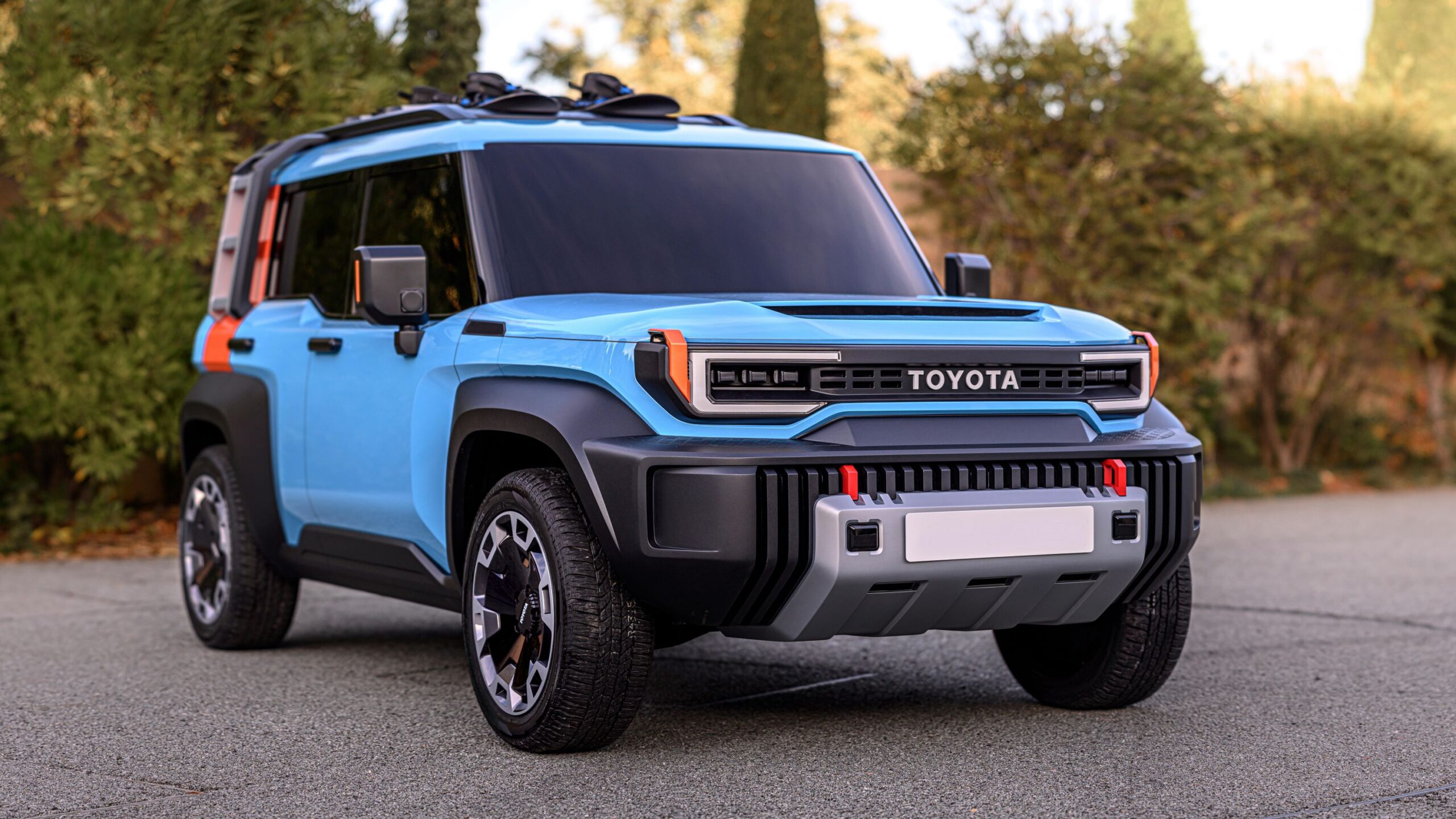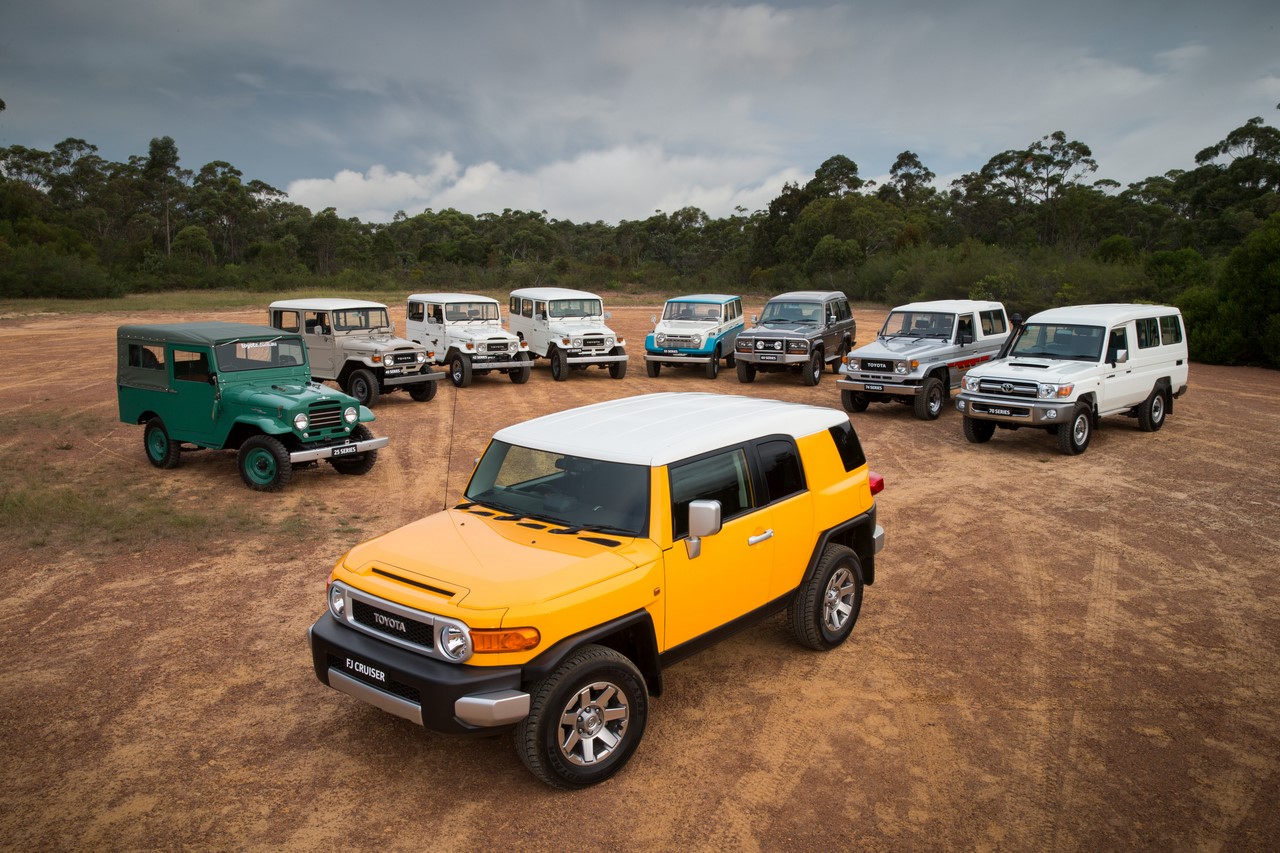New Toyota FJ-Inspired SUV: Car enthusiasts have been waiting years for Toyota to bring back something special. The legendary FJ Cruiser left showrooms over a decade ago, but its spirit might be returning soon. Recent patent documents discovered in the Philippines show what could be Toyota’s next big off-road adventure.
Top Gear Philippines recently uncovered design patents that Toyota filed back in January 2024. The drawings reveal a compact, boxy SUV that looks remarkably similar to previous teaser images from the automaker. This isn’t just another rumor floating around social media – it’s official documentation that gives us our clearest look yet at Toyota’s upcoming small off-roader.
The Discovery That Changed Everything
Patent hunters working through international databases stumbled upon something remarkable. Filed with the World Intellectual Property Organization, these design documents show a vehicle that perfectly matches Toyota’s 2023 silhouette teasers. The timing seems perfect, as automotive enthusiasts have been craving a return to the rugged, no-nonsense design philosophy of the original FJ Cruiser.
What makes this discovery even more exciting is how the patent drawings align with Toyota’s recent trademark filing for “Land Cruiser FJ”. The pieces of this puzzle are starting to come together in ways that suggest something real is happening behind Toyota’s closed doors.
Bold Design Elements That Stand Out
Rugged Exterior Features

The patent images reveal a vehicle that doesn’t apologize for its utilitarian appearance. Thick C-pillars dominate the rear section, though some critics worry about potential blind spots during city driving. The design clearly prioritizes function over form, staying true to the off-road DNA that made the original FJ Cruiser so beloved.
Chunky wheel arch extensions wrap around the entire lower body, suggesting serious off-road intentions. These black plastic cladding pieces blend seamlessly into robust bumpers that look ready to handle whatever trail obstacles might appear. The rear end maintains an almost vertical stance, complete with what appears to be a full-size spare tire mounted on the tailgate.
Classic Off-Road Styling Cues
Ground clearance appears generous in the patent drawings, though the placeholder wheels look smaller than what production models typically receive. LED headlight clusters provide a modern touch while maintaining the boxy proportions that define this vehicle category. The overall silhouette suggests a five-door configuration, making it more practical than the three-door original FJ Cruiser.
The stepped side window line creates visual interest while maintaining the blocky character that off-road enthusiasts expect. Pronounced front fenders give the vehicle a muscular stance that suggests serious capability beyond paved roads.
Platform and Engineering Details
Foundation Built for Adventure
Industry reports suggest this new compact SUV will ride on Toyota’s IMV-0 platform, the same architecture planned for the next-generation Hilux and Fortuner. This ladder-frame construction represents a significant advantage over unibody competitors like the Ford Bronco Sport. Real truck-based underpinnings typically translate to superior off-road performance and towing capability.
The ladder-frame chassis promises authentic four-wheel-drive experiences that crossover SUVs simply cannot match. While this construction method might result in a less refined on-road ride compared to car-based platforms, serious off-road enthusiasts understand the trade-offs involved.
Size and Proportions
Japanese automotive publications suggest the production version will stretch approximately 4,500mm (177.2 inches) in overall length. This puts it squarely in the compact SUV segment, larger than a Corolla Cross but potentially smaller than a RAV4. The wheelbase is expected to measure around 2,750mm, providing reasonable interior space while maintaining off-road maneuverability.
These dimensions position the vehicle perfectly between Toyota’s current offerings, filling a gap that many customers have been requesting for years.
Powertrain Expectations
Engine Options on the Horizon
Reports from Japanese automotive sources indicate the new FJ will likely receive the 2.7-liter four-cylinder gasoline engine currently used in the Hilux Champ. While this represents a significant step down from the original FJ Cruiser’s 4.0-liter V6, modern efficiency requirements and cost considerations make this choice understandable.
Hybrid powertrains are also expected to join the lineup, following Toyota’s broader electrification strategy. The company has extensive experience combining gasoline engines with electric motors across its SUV range, from the RAV4 Hybrid to the new Prius systems.
Four-Wheel Drive Systems
Staying true to Land Cruiser heritage, the new compact SUV will almost certainly feature standard four-wheel drive rather than optional all-wheel drive. This distinction matters significantly for serious off-road use, as dedicated 4WD systems typically include low-range gearing and mechanical locking differentials.
Toyota’s proven A-Trac traction control system or similar technology will likely help distribute power where it’s needed most during challenging terrain encounters.
Market Positioning and Pricing Strategy
Affordable Entry Point
Current speculation suggests Japanese pricing could start around ¥4-4.5 million, translating to approximately $26,600-$30,000 at current exchange rates. This would position the compact FJ significantly below the Land Cruiser 250’s starting price of roughly $34,700 in Japan.
North American pricing is expected to begin around $35,000, potentially reaching $45,000 for fully-equipped versions. These estimates would make the new FJ considerably more accessible than the current Land Cruiser’s $58,150 starting price in the United States.
Competitive Landscape
The compact off-road SUV segment has been heating up recently, with vehicles like the Ford Bronco Sport and Jeep Compass Trailhawk attracting adventure-minded buyers. Toyota’s entry would bring the reliability and durability reputation that the brand has built over decades of Land Cruiser production.
The ladder-frame construction gives Toyota a significant advantage over unibody competitors in this price range, potentially justifying premium pricing for customers who prioritize genuine off-road capability.
Timeline and Production Challenges
Delayed but Not Forgotten
Original reports suggested the compact FJ would debut in late 2024, but current information points to a 2026 launch timeline. Production slowdowns affecting the larger Land Cruiser 250, combined with certification issues, appear to be contributing factors in this delay.
Global trade tensions and potential tariff complications may also be influencing Toyota’s production planning and market rollout strategy. The automotive industry has faced numerous challenges in recent years, from supply chain disruptions to evolving regulatory requirements.
Manufacturing Considerations
The choice of production location will significantly impact pricing and availability in different markets. Local manufacturing in key markets could help keep costs down while avoiding potential import tariff complications.
Toyota’s global manufacturing network provides flexibility in choosing optimal production locations based on market demand and trade considerations.
Competition and Market Impact
Taking on Established Players

The compact off-road SUV segment includes several strong competitors that have been building followings over the past few years. Jeep’s Compass Trailhawk offers genuine off-road capability in a smaller package, while the Ford Bronco Sport has attracted buyers seeking adventure-ready styling and capability.
Toyota’s reputation for reliability and durability could give the new FJ a significant advantage over competitors that may lack the same proven track record for long-term dependability.
Revival of Authentic Off-Roaders
The return of body-on-frame construction in this price segment represents a victory for enthusiasts who value traditional off-road engineering over car-based crossover compromises. Real truck underpinnings provide capabilities that simply cannot be matched by unibody alternatives, regardless of electronic assistance systems.
This engineering approach aligns with growing consumer interest in vehicles that can handle serious outdoor adventures rather than just looking the part.
Design Philosophy and Heritage
Honoring the Original
The patent drawings show clear visual connections to both the original FJ Cruiser and the classic 70-Series Land Cruiser. Toyota appears to understand that customers want authentic design elements rather than watered-down interpretations of off-road styling.
Functional design choices dominate the aesthetic, from the upright stance to the protective body cladding. This approach should appeal to buyers who prioritize capability over flashy styling details.
Modern Touches with Classic DNA
While maintaining rugged proportions, the new design incorporates contemporary elements like LED lighting clusters and modern body surfacing. The balance between heritage and progress appears carefully considered, avoiding the trap of either looking too retro or abandoning the character that made the original special.
The five-door configuration represents a practical evolution that addresses one of the original FJ Cruiser’s main limitations – rear seat access and cargo versatility.
Short FAQs
When will the new Toyota FJ be available?
Current reports suggest a 2026 debut, delayed from earlier predictions of late 2024 or 2025.
What platform will the new FJ use?
The compact SUV is expected to ride on Toyota’s IMV-0 ladder-frame platform, shared with future Hilux and Fortuner models.
How much will the new FJ cost?
Pricing estimates suggest around $35,000-$45,000 in North America, significantly less than the current Land Cruiser.

